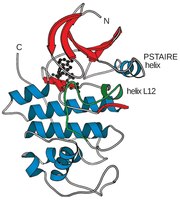
Photo from wikipedia
Abstract Objective The study sought to investigate the disease state–dependent risk profiles of patient demographics and medical comorbidities associated with adverse outcomes of severe acute respiratory syndrome coronavirus 2 (SARS-CoV-2)… Click to show full abstract
Abstract Objective The study sought to investigate the disease state–dependent risk profiles of patient demographics and medical comorbidities associated with adverse outcomes of severe acute respiratory syndrome coronavirus 2 (SARS-CoV-2) infections. Materials and Methods A covariate-dependent, continuous-time hidden Markov model with 4 states (moderate, severe, discharged, and deceased) was used to model the dynamic progression of COVID-19 during the course of hospitalization. All model parameters were estimated using the electronic health records of 1362 patients from ProMedica Health System admitted between March 20, 2020 and December 29, 2020 with a positive nasopharyngeal PCR test for SARS-CoV-2. Demographic characteristics, comorbidities, vital signs, and laboratory test results were retrospectively evaluated to infer a patient’s clinical progression. Results The association between patient-level covariates and risk of progression was found to be disease state dependent. Specifically, while being male, being Black or having a medical comorbidity were all associated with an increased risk of progressing from the moderate disease state to the severe disease state, these same factors were associated with a decreased risk of progressing from the severe disease state to the deceased state. Discussion Recent studies have not included analyses of the temporal progression of COVID-19, making the current study a unique modeling-based approach to understand the dynamics of COVID-19 in hospitalized patients. Conclusion Dynamic risk stratification models have the potential to improve clinical outcomes not only in COVID-19, but also in a myriad of other acute and chronic diseases that, to date, have largely been assessed only by static modeling techniques.
Journal Title: Journal of the American Medical Informatics Association : JAMIA
Year Published: 2022
Link to full text (if available)
Share on Social Media: Sign Up to like & get
recommendations!